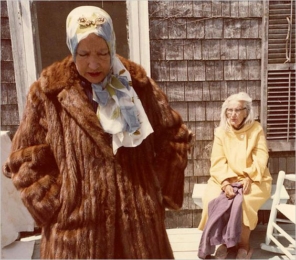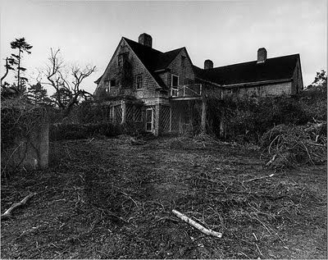It’s time to visit the past and unearth those gems you maybe weren’t alive to see. FIB uncovers the cult classics from when cinema was less tainted than it is today.
The first cult classic to scribble onto your Watch List is David and Albert Mayseles’ gritty, sincere and unrivalled doco: Grey Gardens. Made in 1975, this rare piece of cinema depicts a small piece of life that is both immensely unique and entirely universal and what we see is sometimes ugly, sometimes profound, and always real.
The film follows the life of mother, Edith Beale, and daughter, Edie Beale (often referred to as big Edie and little Edie) as they go about their daily life in their crumbling East Hamptons mansion. Fame, loss and ambition are at the heart of their story and their decaying estate acts as a cage, holding them both hostage to their dreams. Edith, now old and decaying like the home she lives in, once knew power and prestige as a famous singer. Her daughter, Edie, shared her same motivations and dreams, only this time to be a dancer. So, what we see is fame once had and potential never realised combining to create a stark portrayal of both lives leading to the same destination.

The Beales are unapologetically themselves and the strength of this documentary stems largely from their interaction with the filmmakers. David and Albert Mayseles’ observation of the women is done best in intimate moments when the Beales aren’t performing for the camera. In the quieter moments of the film, the camera records the smaller, humanising details of the Beales. For instance, when big Edie and little Edie share a meal Albert warmly films the cats on Edith’s bed, the way little Edie attempts to eat icecream with a plastic knife, and the introspective expressions on each face after the two bicker about one subject or another. The Mayseles brothers find a way of balancing participatory and observational forms to highlight the fact that the audience is watching a film, whilst also proving that intimacy and genuineness can be found in the act of making it.

The film is not proving anything, nor informing the audience of anything. It is simply an authentic portrayal of two women’s eccentricity, their relationship, and their alternate way of living. This was achieved through combining two documentary styles: Cinema verite’ and direct cinema. These styles, like most documentary styles, emerged from a combination of philosophical and technological advances. What might be the loftiest of these advances is the invention of the Auricon camera. It’s lightweight nature allowed filmmakers to follow the action for the first time. Before this, certain events had to be recreated or dismissed, as they could not be followed. Advances in sound recording also played a huge role as the audience is able to hear quieter comments made by the Beales and the soft purr of the wild cats that inhabit the manor, adding to the impression that the audience is there, with them and building the world of the Beales.

Much like the Beales in their own lives, the film jumps from one situation to another, however all of them are
relatively the same. The audience sees the Beales relax, perform and argue over and over again: a response to the way they live their lives. The story itself, it’s non-linear structure and the liberation of the camera are all cinema verite techniques utilized by the Mayseles brothers, however they also make use of a number of direct cinema practices. Refraining from use of narration or music are key direct cinema techniques that the brothers abided by. In doing so, the audience more readily accepts what they are seeing to be the truth. The use of narration or music would have steered the audience to feel a certain way or view the Beales in a specific light. Therefore, it is the harmonious way that the direct cinema and cinema verite’ styles are combined in Grey Gardens which allows the Mayseles to truthfully depict the Beales as they are.
The Mayseles brothers 1975 film Grey Gardens is an exploration of humanity, seen through the lives of two women: Edith and Edie Beale. The Beales embody the combined ambition and defeat we all feel in pursuing our dreams. Edie herself explained it best: “the film is a breakthrough to something very beautiful and precious called life.”







